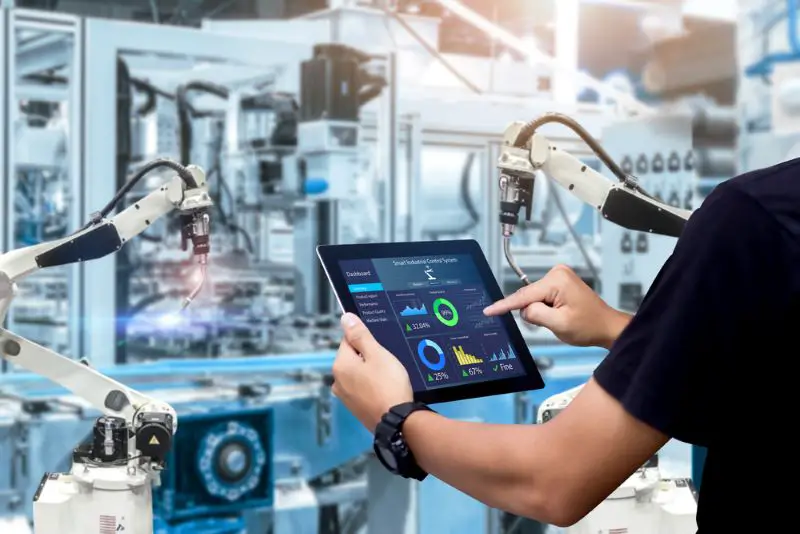Click here to get this post in PDF
In today’s fast-paced business landscape, companies are increasingly turning to automation to enhance efficiency, reduce costs, and stay competitive. However, selecting the right automation solution for your business isn’t a one-size-fits-all decision. The right choice depends on various factors such as the nature of your industry, the specific tasks you need to automate, your budget, and the existing infrastructure of your business. This article will guide you through the essential steps to make an informed decision when choosing the right automation solution for your business.
1. Identify Your Business Needs
The first step in choosing an automation solution is understanding the specific needs of your business. What processes or tasks are you looking to automate? Are you aiming to improve production efficiency, enhance customer service, or streamline supply chain management? By clearly defining your objectives, you can narrow down the types of automation solutions that are best suited for your business.
For instance, if you are in manufacturing, you might need an automation solution that focuses on production line efficiency. In contrast, a service-based business might prioritize automating customer relationship management (CRM) or marketing activities.
2. Assess Your Current Infrastructure
Before selecting an automation solution, it’s crucial to evaluate your existing infrastructure. This includes your hardware, software, and networking capabilities. The goal is to ensure that the new automation solution will integrate seamlessly with your current systems.
One key component to consider is your industrial networking solution. This refers to the communication framework that connects your industrial devices and systems. A robust industrial networking solution is essential for ensuring that data flows smoothly between different parts of your automated system. This not only improves efficiency but also reduces the risk of downtime due to connectivity issues.
3. Consider Scalability
As your business grows, your automation needs will likely evolve. Therefore, it’s important to choose an automation solution that is scalable. This means the solution should be able to grow and adapt to your business’s increasing demands without requiring a complete overhaul.
Scalability also involves considering future technological advancements. For instance, Industry 4.0 and the Internet of Things (IoT) are rapidly transforming the industrial landscape. An automation solution that can easily integrate with these technologies will be more future-proof.
4. Evaluate Vendor Options
There are numerous automation solution providers in the market, each offering a range of products and services. When evaluating vendors, consider factors such as their reputation, experience in your industry, and the level of customer support they provide.
It’s also beneficial to look for vendors that offer comprehensive solutions rather than just individual products. A vendor that provides end-to-end solutions, from consultation to implementation and ongoing support, can save you time and resources in the long run.
5. Understand the Total Cost of Ownership (TCO)
While the upfront cost of an automation solution is an important consideration, it’s equally important to understand the total cost of ownership (TCO). TCO includes not only the initial purchase price but also costs related to installation, maintenance, training, and potential downtime.
For example, a cheaper solution might require more frequent maintenance or may not be as reliable, leading to higher long-term costs. On the other hand, investing in a more expensive, high-quality solution might offer better reliability and lower maintenance costs over time.
6. Prioritize User-Friendliness
Even the most advanced automation solution can become a burden if it’s too complex for your employees to use effectively. When choosing an automation solution, prioritize user-friendliness. The system should have an intuitive interface, clear instructions, and adequate training resources.
User-friendliness also extends to the ease of integration with your current processes. A solution that requires minimal changes to your existing workflow will be easier to implement and will cause less disruption to your operations.
7. Focus on Security
With the increasing reliance on automation and digital systems, cybersecurity is a critical concern. An automated system that’s vulnerable to cyberattacks can lead to significant financial and reputational damage.
Ensure that the automation solution you choose has robust security features, including encryption, access controls, and regular security updates. Additionally, consider working with vendors who are committed to maintaining high-security standards and who offer ongoing support to address potential vulnerabilities.
8. Test Before You Commit
Before fully committing to an automation solution, it’s advisable to conduct a pilot test. This allows you to see how the system performs in your real-world environment and gives you the opportunity to identify any issues before rolling it out across your entire operation.
During the pilot phase, gather feedback from the employees who will be using the system daily. Their insights can be invaluable in identifying potential problems and ensuring that the solution meets your business’s needs.
Choosing the right automation solution for your business is a critical decision that can have a significant impact on your operations and long-term success. By carefully considering your business needs, assessing your current infrastructure, evaluating scalability, understanding the TCO, and prioritizing security and user-friendliness, you can select an automation solution that aligns with your business goals and supports your growth.
Remember, the right automation solution isn’t just about implementing the latest technology—it’s about finding the right fit for your business’s unique needs. Taking the time to make an informed decision will pay off in the form of increased efficiency, reduced costs, and a stronger competitive edge in the market.
You may also like:
AI-powered data warehousing: Revolutionizing decision making and business efficiency in 2025
Differences Between Octopus CRM and Dripify LinkedIn Automation Tools
RISA Labs Raises $3.5M to Eliminate Treatment Delays with AI-Powered Workflow Automation in Oncology
Image source: Depositphotos.com

